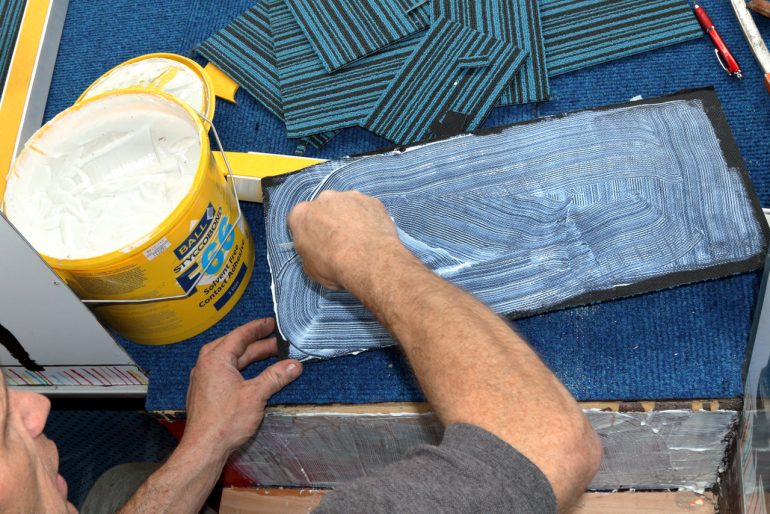Most flooring adhesives are designed to be applied to a subfloor and a floorcovering is then installed while the adhesive is still wet. This allows the adhesive to flow into the (microscopically) textured surface of both materials and key in to the surfaces as it dries. In doing this a secure bond is achieved.
When a contact adhesive is used, the adhesive is applied to both surfaces and allowed to partially dry before bringing the two surfaces together. So how does the adhesive create a strong bond?
Immediate bond
With a contact adhesive, the two films of adhesive (one on the subfloor/wall and the other on the floor covering/skirting) coalesce when they are pressed together. Already bonded to their respective substrates, an immediate bond is formed.
In reality the two films of adhesive are not quite fully dry, otherwise the binding effect would not be able to take place. While the adhesive should be ‘touch dry’, it is formulated so that each film of adhesive is fluid enough to mix with the adhesive film on the opposing surface, but, at the same time, is dry enough so as not to allow any movement once adhered.
Each adhesive film needs to be able to ‘grab’ and hold onto the opposing film of adhesive and mechanically lock into it.
Maximum bond strength
It is normally recommended that a heavy roller is used after installation of a floorcovering to ensure the two adhesive films are firmly pressed together and homogenised, thereby maximising the strength of the bond. The adhesive will continue to increase its bond strength as it dries.
If a contact adhesive is left too long before the two substrates are put together, it will not be able to create a bond, as the adhesive will not be fluid enough to enable this coalescence to occur and the bond will fail. Typically, a contact adhesive will have an ‘open time’ of 30 minutes from when it is touch dry, before it becomes too dry to achieve an effective bond.


